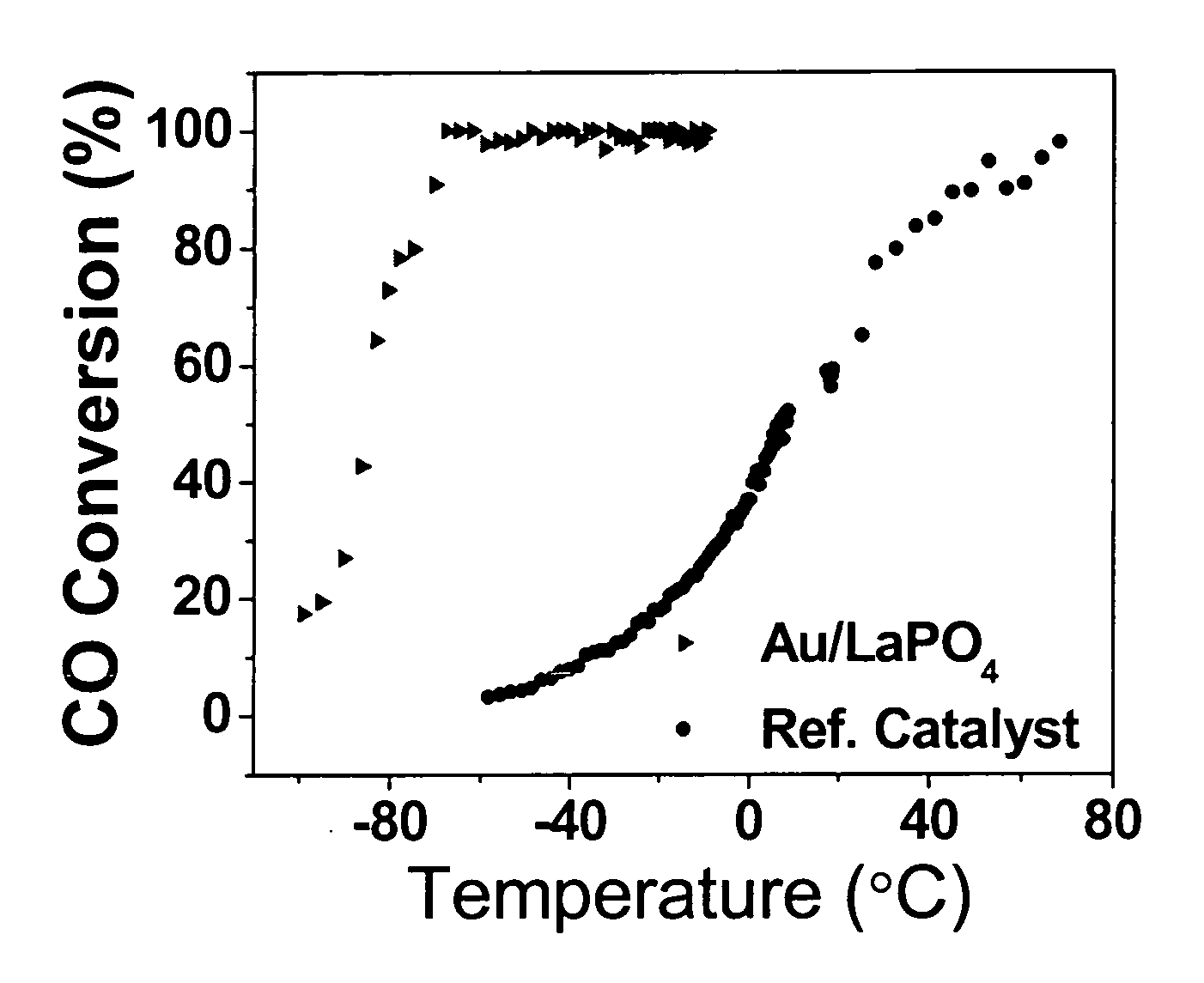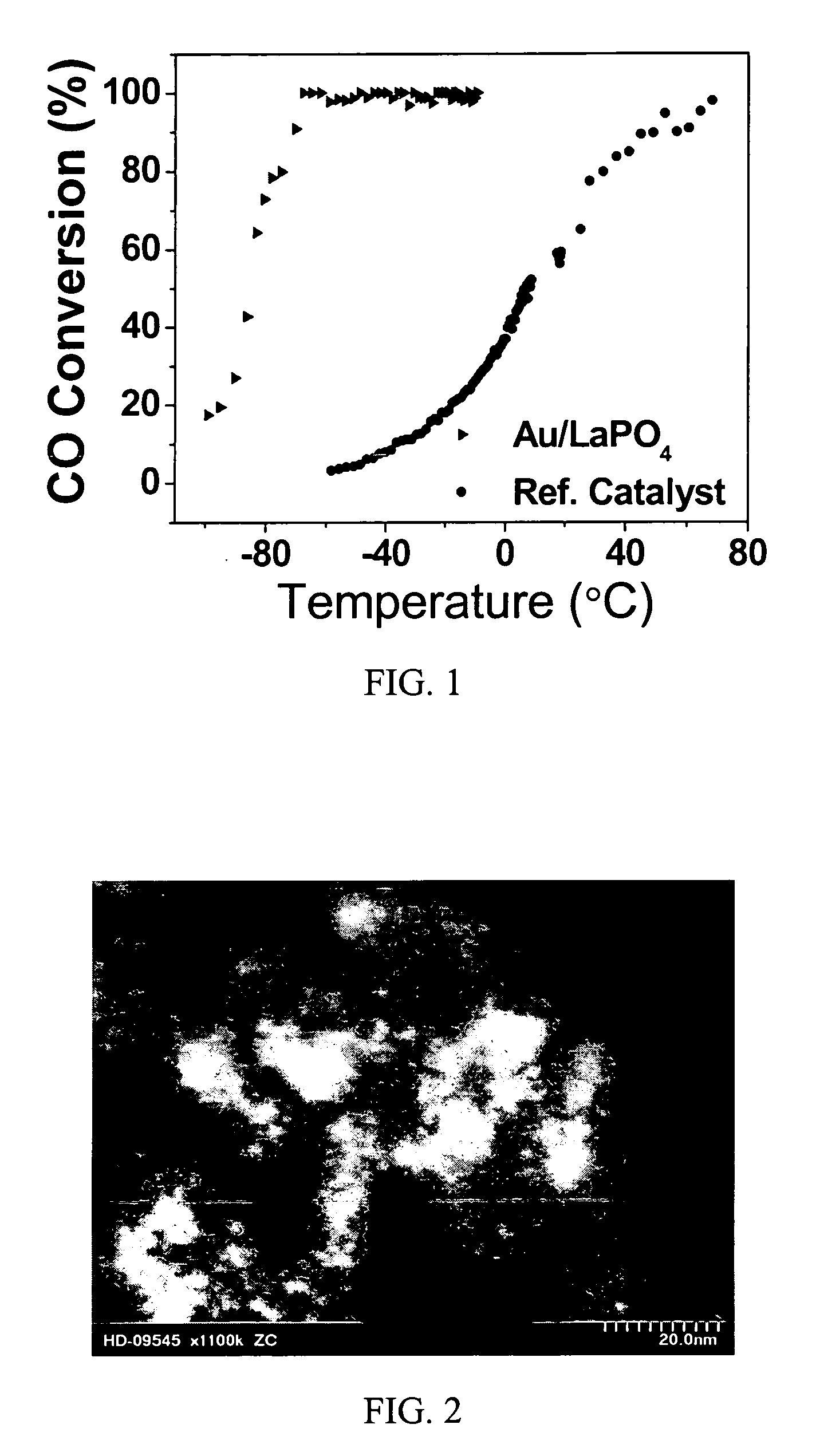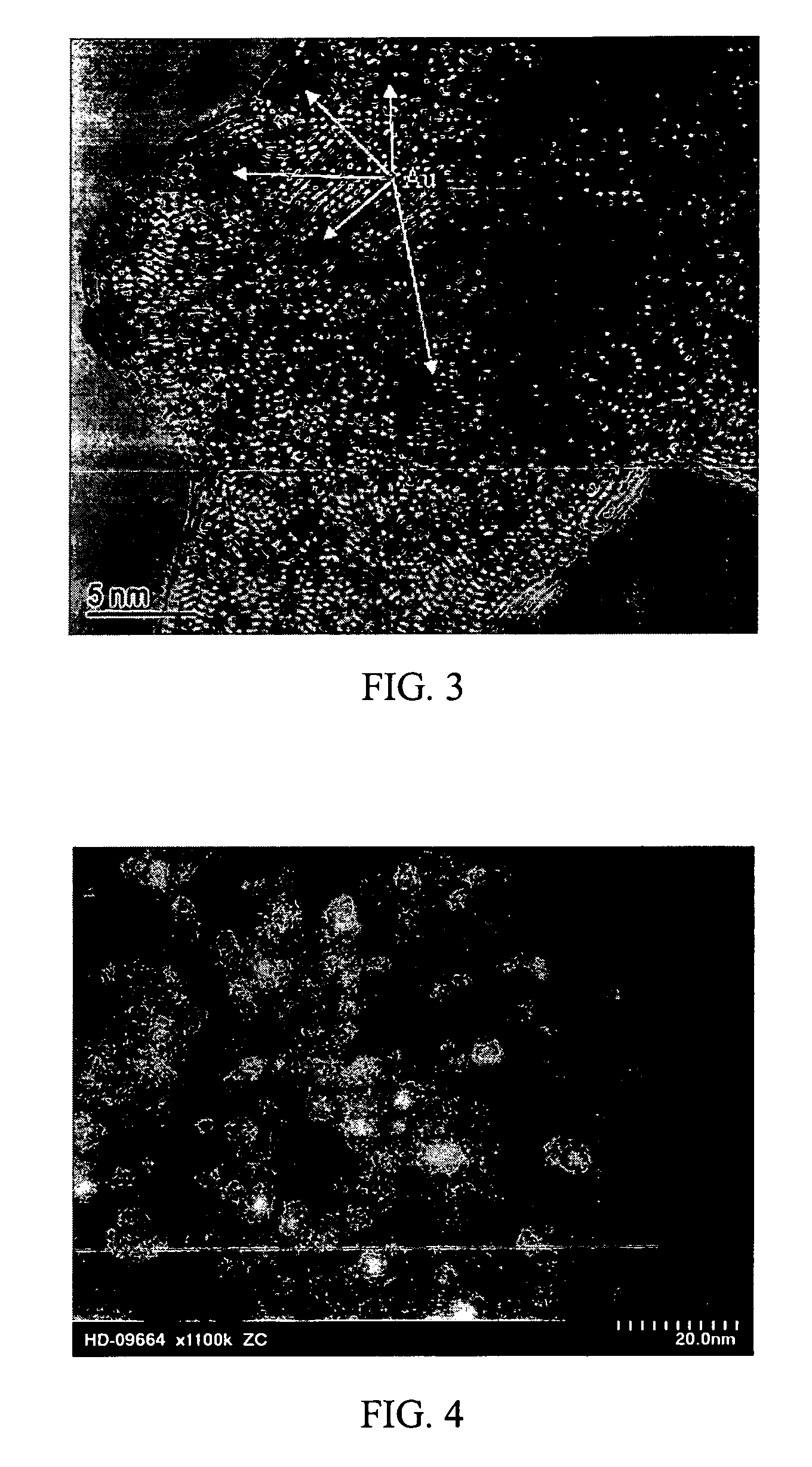Surface-stabilized gold nanocatalysts
a nanocatalyst and surface stabilization technology, applied in the direction of metal/metal-oxide/metal-hydroxide catalysts, physical/chemical process catalysts, metal/metal-oxide/metal-hydroxide catalysts, etc., can solve the problems of limited stability, limited industrial application of gold nanocatalysts, and commercialization of gold catalysts, so as to promote the use of gold and high stability
- Summary
- Abstract
- Description
- Claims
- Application Information
AI Technical Summary
Benefits of technology
Problems solved by technology
Method used
Image
Examples
example 1
Ultra-Stable Au Catalysts Deposited on the Surface of Lanthanum Phosphate (LaPO4) Nanoparticles
[0041]LaPO4 nanoparticles were first prepared. In a typical synthesis, 20 mL of 1.0 M NaOH solution was sonicated by employing a direct immersion titanium horn (Sonics and Materials, VCX-750, 20 kHz, and starting power 30 W / cm2) followed by a drop-injection of 10 mL of 0.60 M LaCl3 solution into the sonication cell. Subsequently, a solution of 0.804 g of (NH4)2HPO4 dissolved in 20 g of deionized water was dropply injected into the above solution during the sonication. After that, the pH value of the resulting solution was adjusted to 12 by a solution of 4 M NaOH. The mixture was further sonicated continuously for 1 hour and the sonication was conducted with air-cooling. The white precipitates were separated by centrifugation and washed several times with deionized water and once with methanol. The product was dried in air at room temperature.
[0042]Ultra-small Au nanoparticles are then depo...
example 2
Ultra-Stable Au Catalysts Deposited on the Surface of the External-Surface Aluminum Oxide Modified Crystalline TiO2
[0049]External-surface aluminum oxide modified crystalline TiO2 was first prepared. Three (3.0) g of commercial TiO2 nanoparticles Degussa P25 or Aldrich anatase powder and one magnetic bar were loaded into a reflux bottle and dried at 125° C. for 16 hours. After that, the bottle was sealed with a pre-dried rubber septum. Subsequently, aluminum tri-sec-butoxide, [C2H5CH(CH3)O]3Al and anhydrous toluene (20 mL) and methanol (20 mL) were transferred into the bottle through a syringe using a standard Schlenk procedure and the solution was refluxed for 3 hours. The final product was filtered, washed several times with absolute-200 proof ethanol and deionized water and dried at 80° C. overnight.
[0050]Ultra-small Au nanoparticles were then deposited on the surface-modified crystalline TiO2 using a deposition precipitation process. 0.3 g of hydrogen tetrachloroaurate (III) tri...
example 3
Preparation of the Ultra-Stable Au Catalysts Deposited on the Surface of the External-Surface Titanium Oxide Modified Crystalline Aluminum Oxide (AlOOH)
[0054]External-surface titanium oxide modified crystalline AlOOH was first prepared. Three (3.0) g of commercial aluminum oxide (AlOOH) nanoparticles (Aldrich) or CATAPAL A aluminum oxide powder (Sasol North America Inc.) and one magnetic bar were loaded into a reflux bottle and dried at 125° C. for 16 hours. After that, the bottle was sealed with a pre-dried rubber septum. Subsequently, 6.0 mL of titanium (IV) butoxide (Aldrich, 97%) and anhydrous toluene (20 mL) and methanol (20 mL) were transferred into the bottle through a syringe using a standard Schlenk procedure and the solution was refluxed for 3 hours. The final product was filtered, washed several times with absolute-200 proof ethanol and deionized water and dried at 80° C. overnight.
[0055]Ultra-small Au nanoparticles were then deposited on the surface-modified crystalline ...
PUM
| Property | Measurement | Unit |
|---|---|---|
| particle size | aaaaa | aaaaa |
| thick | aaaaa | aaaaa |
| temperature | aaaaa | aaaaa |
Abstract
Description
Claims
Application Information
 Login to View More
Login to View More - R&D
- Intellectual Property
- Life Sciences
- Materials
- Tech Scout
- Unparalleled Data Quality
- Higher Quality Content
- 60% Fewer Hallucinations
Browse by: Latest US Patents, China's latest patents, Technical Efficacy Thesaurus, Application Domain, Technology Topic, Popular Technical Reports.
© 2025 PatSnap. All rights reserved.Legal|Privacy policy|Modern Slavery Act Transparency Statement|Sitemap|About US| Contact US: help@patsnap.com



